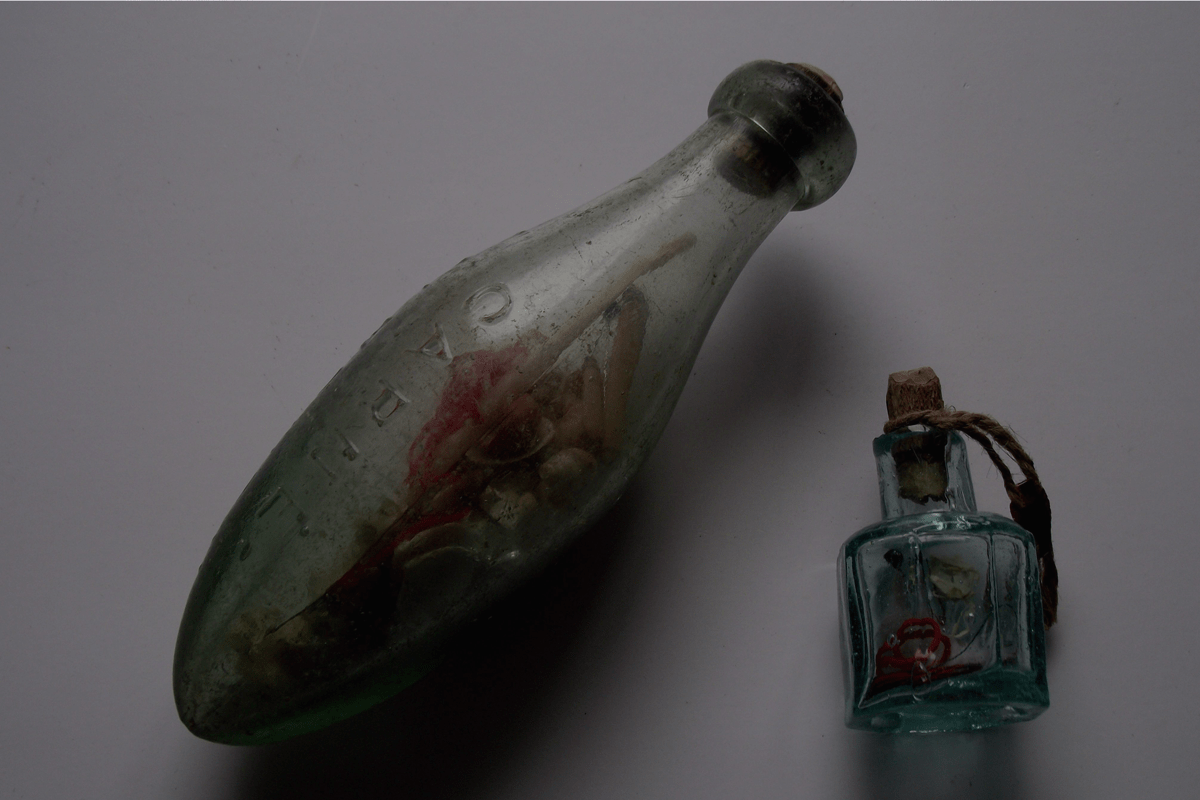
History
Witch Bottles | History | Original Use | Modern Versions | Witch Bottle Recipes
The actual bottle of a traditional witch bottle during the 16th and 17th century was a German stone bottle called “bartmann” or “bellermine” bottle. Similar bottles of stone material were manufactured in Holland and Belgium. The technique wasn’t mastered in England before the 1660’s and bartmann bottle manufacturing was rare in Britain.

Even though these bottles were being manufactured actively in Germany long before the time of Bellarmino – who was against the Reformation – these bottles were given their familiar name as a satirical comment on the Cardinal. His bearded figure resembled the typical bearded man depicted on these bottles.1 Later on, the bearded image was taken to represent the Devil, which suited well for witch bottles, after all — witches were considered as people allied with the Devil.
Old Witch-bottles contained things like bent iron nails, human hair (head hair and pubic hair) and urine. Urine as an important ingredient of a Witch-bottle has been long known in folk traditions, but actual findings with the bottle still containing urine have been rare. However, all of the Witch-bottles found in England which was tested for urine did prove positive. Other traditional items contained in witch bottles include small bones, thorns, needles, pieces of wood and in some cases heart-shaped pieces of cloth.
1 Oxoniana , vol. i. p. 232, tells how the bottle got its name: ‘One of the Fellows of Exeter (College), when Dr Prideaux was rector, sent his servitor, after nine o’clock at night, with a large bottle to fetch some ale from the alehouse. When he was coming home with it under his gown the proctor met him, and asked him what he did out so late, and what he had under his gown? The man answered that his master had sent him to the stationers to borrow Bellarmine, which book he had under his arm; and so he went home. Whence a bottle with a big belly is called a Bellarmine to this day, 1667.’
